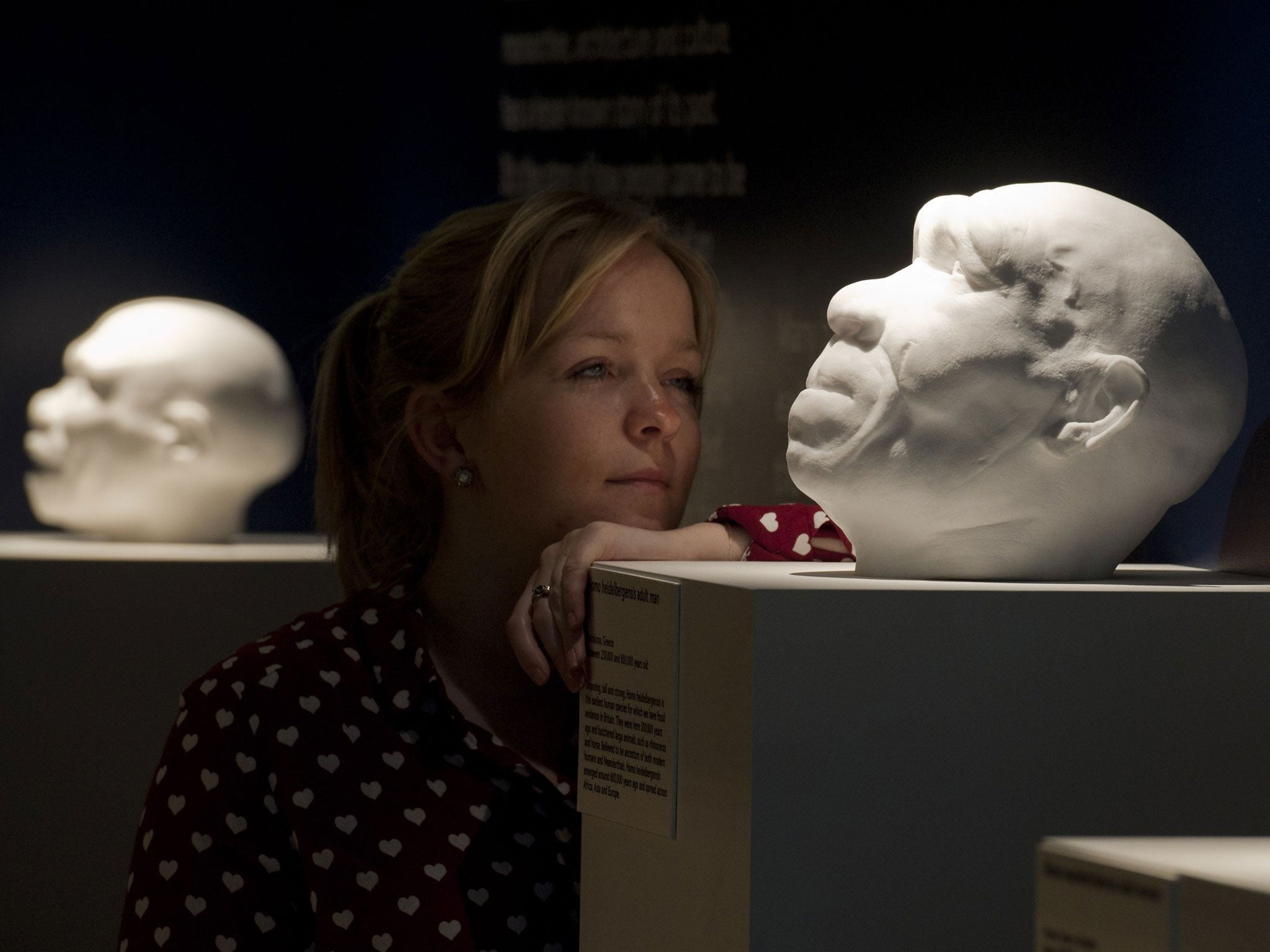Natural History Museum stages prehistoric family reunion

For the first time ever, all the major British remains from different Stone Age human species are being brought together in a ground-breaking temporary exhibition – Britain: One Million Years of the Human Story.
Their remains, and examples of the artefacts they made, will be displayed to the public for the next seven and a half months.
It is the first time that many of the items have been on public display. They include northern Europe’s oldest flint tools, made in Norfolk at least 850,000 years ago – probably by an early human species called Homo antecessor; a 500,000-year-old human leg bone from another extinct human species, Homo heidelbergensis, found in Sussex; a 400,000-year-old early Neanderthal human skull from Kent; 230,000-year-old Neanderthal jaw fragments and teeth from Wales; 40,000-year-old bone fragments and teeth of Britain’s earliest known modern humans (our species - Homo sapiens) from Kent’s Cavern, Devon; and the famous ‘Red Lady of Paviland’ – a ritually ochre-stained male Homo sapiens skeleton from Wales, dating back 40,000 years.
Professor Chris Stringer, of the Natural History Museum, a world authority on human origins said: “Britain has one of the richest yet most underappreciated records of early human history in the world”.
The 400,000-year-old female skull, found in Swanscombe in Kent, has not been on public display for many decades. From a young adult woman, it was discovered in one of the most important prehistoric archaeological zones in Britain, where, over the years, some 10,000 Neanderthal hand axes have been found.
The exhibition – open to the public from Thursday 13 February to 28 September - will also feature specially commissioned Neanderthal and Stone Age Homo sapiens models that are the most life-like and scientifically accurate ever made. Also exposed will be skeletal material from Somerset that shows clear evidence of cannibalism 14,700 years ago, a hippo tooth from Trafalgar Square, and a woolly rhinoceros skull from Peterborough.
The exhibition also features reflections on prehistoric personal ancestries, derived from DNA analysis, from comedian Bill Bailey; TV presenter and author, Clive Anderson; TV presenter, Sian Williams; scientist and broadcaster, Professor Alice Roberts; medical researcher and broadcaster, Dr Kevin Fong; and space scientist, Dr Maggie Aderin-Pocock .
Join our commenting forum
Join thought-provoking conversations, follow other Independent readers and see their replies
Comments